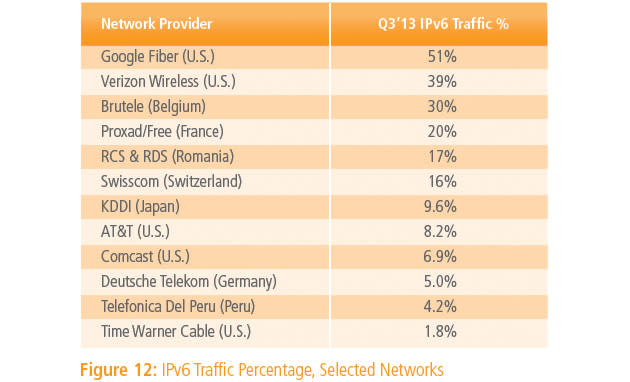European carriers and Google Fiber are leading the IPv6 charge

The advanced IPv6 standard reached the internet well over a year ago. But who's really using it? Mostly Europeans, if you ask Akamai. The content delivery firm is now tracking IPv6 adoption as of its latest State of the Internet report, and it found that European nations represented seven of the top ten countries using IPv6 in the third quarter of 2013. The US was more modest in embracing IPv6 with 4.2 percent of all traffic relying on the newer technology, while Asia was relatively slow on the uptake. Adoption varies widely from provider to provider, though. More than half of Google Fiber's traffic was based around the protocol, while more established companies like Deutsche Telekom and Time Warner Cable still leaned heavily on old-fashioned IPv4.
There are a handful of other revelations in the report. Denial of service attacks dropped for the first time since the end of 2012, with China passing Indonesia to once more become the biggest source of incursions. Broadband speeds were also clearly on the way up -- Akamai notes that use of high-speed internet access (over 10Mbps) jumped 31 percent quarter-to-quarter to to hit 19 percent worldwide. These increases primarily came from South Korea, the Netherlands and other countries that already have high average internet speeds. Not that Americans can complain too much. The US mostly kept pace with a typical internet speed of 9.8Mbps, or enough to make it the eighth fastest country on Earth.













































